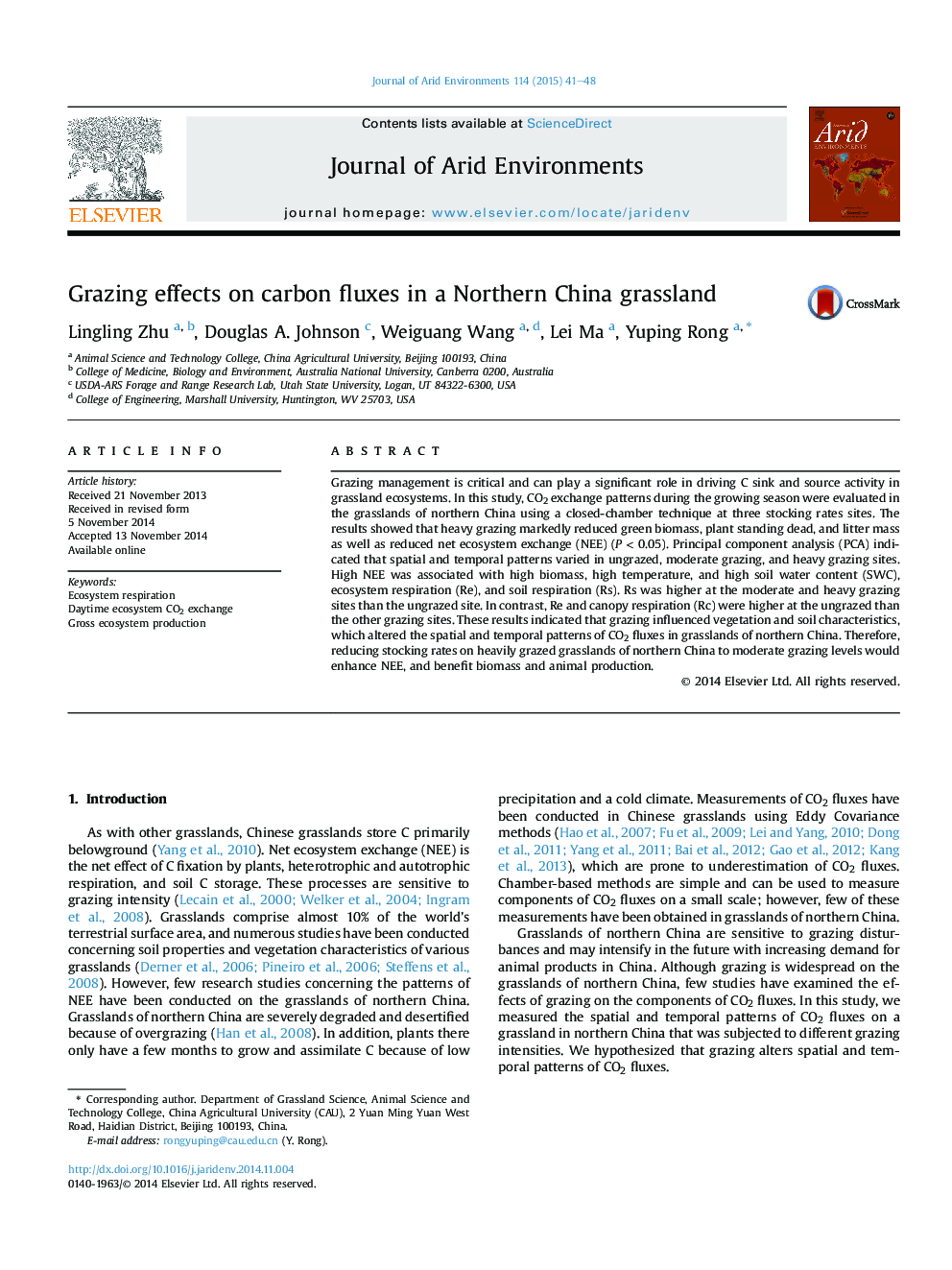| Article ID | Journal | Published Year | Pages | File Type |
|---|---|---|---|---|
| 6303428 | Journal of Arid Environments | 2015 | 8 Pages |
Abstract
Grazing management is critical and can play a significant role in driving C sink and source activity in grassland ecosystems. In this study, CO2 exchange patterns during the growing season were evaluated in the grasslands of northern China using a closed-chamber technique at three stocking rates sites. The results showed that heavy grazing markedly reduced green biomass, plant standing dead, and litter mass as well as reduced net ecosystem exchange (NEE) (PÂ <Â 0.05). Principal component analysis (PCA) indicated that spatial and temporal patterns varied in ungrazed, moderate grazing, and heavy grazing sites. High NEE was associated with high biomass, high temperature, and high soil water content (SWC), ecosystem respiration (Re), and soil respiration (Rs). Rs was higher at the moderate and heavy grazing sites than the ungrazed site. In contrast, Re and canopy respiration (Rc) were higher at the ungrazed than the other grazing sites. These results indicated that grazing influenced vegetation and soil characteristics, which altered the spatial and temporal patterns of CO2 fluxes in grasslands of northern China. Therefore, reducing stocking rates on heavily grazed grasslands of northern China to moderate grazing levels would enhance NEE, and benefit biomass and animal production.
Related Topics
Physical Sciences and Engineering
Earth and Planetary Sciences
Earth-Surface Processes
Authors
Lingling Zhu, Douglas A. Johnson, Weiguang Wang, Lei Ma, Yuping Rong,
